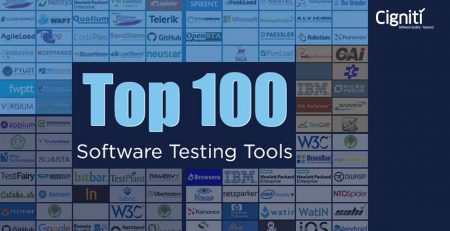Shifting Left – Using Cost of Quality as a Driver Against Resistance
Agile practices, being espoused almost universally, demand that testing be done faster and earlier in the software development lifecycle (SDLC).
Leaders of application development are under cumulative pressure to sustain quality while growing delivery velocity.
To establish a highly productive product delivery organization, they should employ a shift-left approach to testing and invest in test automation.
Shifting left refers to bringing this development and testing together early in the development process.
According to Gartner, “Source code that is poorly written and difficult to understand has an impact on the team’s ability to deliver through DevOps. To improve code quality, application leaders should employ shift-left practices.”
As the demand for high-quality software products in a short period of time grows, Agile and DevOps testing teams must adopt new approaches to avoid falling behind.
In this modern era of software delivery, continuous testing and shift-left testing are the two game changers.
What do Shift-Left and Continuous Testing mean for your DevOps QA strategy?
Continuous testing is a process of incorporating automated tests into the software delivery pipeline quickly, steadily, and comprehensively.
While shift-left testing may appear to be the ideal approach for assisting you in the testing process before releasing new products, the technique is insufficient on its own.
Shift-left testing must be integrated into continuous testing so that testers can yield more prevalent, comprehensive, and realistic tests using real functional data.
The confluence of “shift-left continuous testing” increases the automation of your application testing and ensures that it is used as much, as early, and as continuously as possible throughout the product development pipeline.
While continuous testing is part of the DevOps pipeline process for feedback on bugs, shift-left testing focuses on defined targets.
If the whole of the DevOPs pipeline (i.e. from the plan, design, development to implementation) is included in the continuous testing, then the left shift will be part of each cycle and establishes test strategies for each work in the cycle.
Shift-left testing improves ongoing testing and makes it a stronger bug-fighting weapon.
Bug detection can be done more efficiently in the early stage by incorporating left shift testing and continuous testing, leading to higher quality feedback and faster problems resolution, with less effort.
While mastering Shift left testing will improve the quality of the code, it comes with certain challenges.
Challenges of Shift-Left Testing
We live in a competitive era where meeting customers’ expectations and demands is critical to pummeling your competitors.
Here are a few challenges encountered while implementing Shift-Left Testing:
- Planning: Shift-left testing can be difficult to implement if you don’t have a solid plan in place before you start.
- Quality assurance: Maintaining high quality levels during the training and transition phases is a difficult task.
- Developers: Developers can be resistant to testing and should be prepared to expand their skill set to include testability.
Shift-left testing is being used by an increasing number of companies in the modern era of software delivery to ensure that the software they release to the market can outperform the competition.
But it is imperative for organizations to strategize the Shift-Left Testing appropriately.
How to maneuver Shift-Left Testing
The Shift Left Testing levers employs a process that enables developers to detect bugs early and frequently.
Bugs discovered while writing or reviewing code are the easiest to fix because these code units are small and infinitely more manageable.
When a branch is merged into the main development branch, the scope of the code expands, as does the effort required to find anomalies within it.
A cohesive test strategy involves examining interconnections between ecosystems, stubs, automation, and test data, guaranteeing that the respective teams can meet the requirements.
Here are a few points to be considered while implementing Shift-Left Testing:
- Adopt Shift-Left Testing Practices to Implement a Proactive Quality Strategy
- Implement Pair Programming and Code Reviews to ensure code resilience and maintainability.
- Prevent the deployment of complex, brittle, or vulnerable code.
- Establish Automated Static Code Analysis for All Relevant Use Cases.
Shift Left aids in the achievement of agility and the reduction of risks, both of which are critical business requirements. QA and development teams can help eradicate extravagant, disconnected testing processes, by positioning with business goals from the start.
One of the first Shift Left principles requires the testing team to collaborate with all stakeholders early in the software development phase. So that they can comprehend requirements and create test cases that will allow the software to ‘Fail Fast.’ As a result, the team can address all failures as soon as possible.
Testers play an important role in this process. Understanding the requirements, software design, architecture, coding, and functionality, and, most importantly, asking difficult questions and seeking clarification.
The tester’s role also includes making suggestions and providing feedback to help the Shift Left paradigm.
Adopting a shift left strategy can provide a number of advantages.
Shift Left Testing Benefits
Shifting left results in a variety of benefits across their SDLCs. You can achieve safe, reliable, and secure software by implementing Shift Left Testing services leveraging the latest technologies.
Here are a host of benefits you get from using Shift Left Testing.
- Significantly decrease costs: Time and resources can be depleted quickly. Shift-left testing alleviates this issue and saves you money.
- Better quality: Find and fix bugs as soon as they appear, before they cause a problem in production, thus reducing the need for hot fixes.
- Development pipeline: Shift-left testing helps to conduct tests as quickly as possible in the development pipeline.
- Increased effectiveness: By using shift-left testing procedures, you can increase the reliability of your testing and, as a result, get your product to market faster.
- Advantages in competition: Shift-left testing aids in the production of high-quality software products in a short period of time.
- Steadfast testing: Implement shift-left testing procedures to increase your test reliability.
While there are plenty of advantages to Shift Left testing, it is imperative to adhere to best practices.
Best Practices for Shift Left Testing
Develop in a way that is conducive to Shift Left Testing. Once the requirements are established, developers and testers should brainstorm ideas for shaping coding and testing as early and incrementally as possible.
Depending on the product expectations as well as the team’s limitations, specific strategies may need to be developed to accommodate the Shift Left approach in testing.
Use Static Code Analysis for examining code without running it. It goes over the basic code structure and ensures that it adheres to a number of standards and guidelines.
In general, static analysis looks for problems such as programming flaws, violations of widely accepted coding standards, anomalies in syntax, and any concerns about shift left security.
Static code analysis is best accomplished through automation; otherwise, it is incredibly time-consuming.
Before a project is sent to QA, the software should scan all untested code.
A static code analyzer compares a code to a set of predefined standards and rules to see if it complies.
According to Forrester, “As application development and delivery (AD&D) teams speed up continuous delivery (CD), they find performance testing too late in the cycle often results in costly rework. Continuous testing is the new best practice for CD, and Agile-plus-DevOps teams need to embrace shift left to make it happen. Functional testing has been shifting left; now it’s time to do the same with performance testing, adding it to continuous integration and continuous delivery (CI/CD) automation.”
Here are a few more best practices for Shift Left Testing –
- Break down silos in your organization to provide quick feedback and solve problems more quickly and efficiently.
- If your organization is not actively involved in regular code audits, ensure the new testing procedure is implemented to work as intended.
- Get your Project Managers properly prepared and trained to include shift lift performance testing.
Keep in mind that most developers are not trained in testing from the ground up. As a result, they cannot be expected to understand the finer points of testing intuitively.
Quality Analysts and QA managers must outline the anticipated level of quality, performance, and operative success of the code so that developers running tests know what bugs to look for.
They must recognize what issues are non-negotiable and which can be forwarded to QAs (preferably with a few lines of context).
Clarity on quality standards also aids tests in applying the appropriate level of rigor to find bugs in their own code.
Cigniti invites you to attend an interesting webinar where Maryanne Fleming, Head of Technology,
Monsoon Accessorize, and Robb La Velle, Vice President – UK and Europe, Cigniti Technologies, will share insights on making a case for Shift Left Testing, and managing change through a real-world enterprise case study.
Agile methodologies have demonstrated the value of early and continual collaboration across all the disciplines in a project team, particularly if we are to build quality into a solution rather than identify and fix defects at the end of the project.
Retailers are always acutely cost-conscious and making the case for early engagement of quality assurance specialists at the beginning of a project is a key focus for Maryanne and her team as they start on a major re-platforming project.
About the speakers
Maryanne Fleming has worked in retail for more than 30 years. In this time, she has gained valuable insights while leading projects for large multinationals such as Marks and Spencer, Mothercare, Monsoon Accessorize and more. As a Project Manager, she gained first-hand experience of testing time being compressed to hit Go Live dates, with the attendant risk to quality, cost, and actual Go Live dates.
Robb is a thought leader in the domain of software quality assurance and is based in London. His 20 years of consulting experience has included clients and project locations as diverse as a global energy concern in Cape Town, a multinational telecommunications company in Manila, a mining company in Borneo, a global bank in Frankfurt, a major semiconductor manufacturer in Shanghai, and the United States Army at the Pentagon.
What is the webinar all about?
Gartner Research finds that “Application leaders are under increasing pressure to maintain quality while increasing the velocity of delivery”.
QA leaders are aware of practices such as Shift Left methodology and its ability to create a highly productive development lifecycle that helps achieve faster Time-to-Market. However, they are often faced with organizational resistance when it comes to adoption.
Attend this webinar for insights on making a case for Shift Left, establishing an end-to-end strategy, anticipating challenges, and managing change through a real-world enterprise case study.
Who Should Attend?
QA and IT leaders from enterprises in any industry or region will find this webinar insightful.
Register for the webinar and save your spot to listen to some interesting insights on August 5th, 2021.
Being a worldwide leader in independent quality engineering services, Cigniti is a strong advocate of Quality Assurance and its implementation right from the initial stages of the software lifecycle. We encourage customer feedback and believe in including such feedback in our broader quality assurance approach. We take great measures to make sure that we are fully equipped with state-of-the-art services and have partnered with other experts that specialize in providing testing services. Talk to us.





Leave a Reply